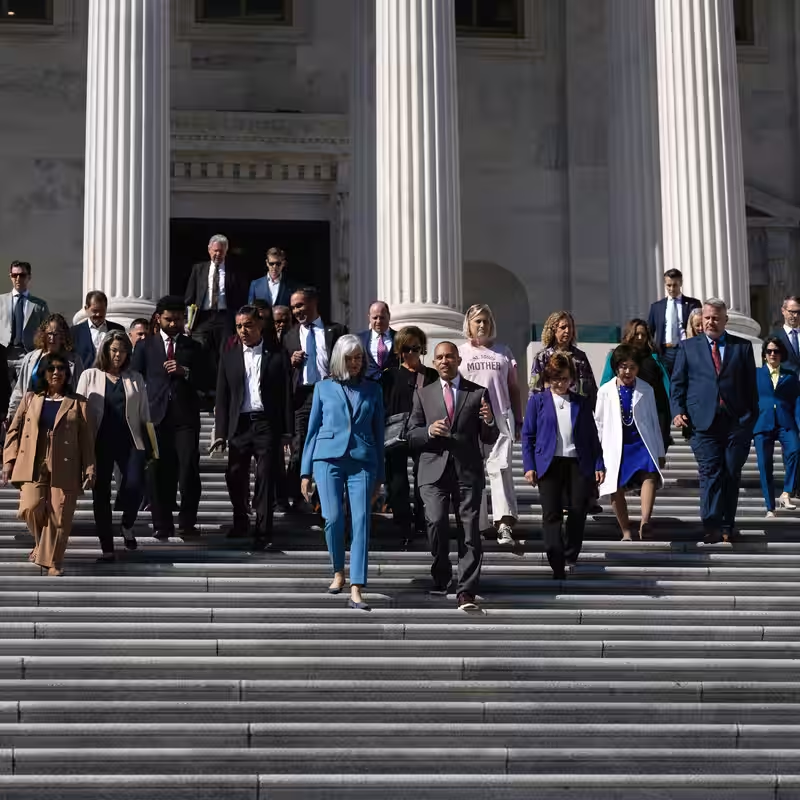Table of Contents
- Government Shutdown Hits Third Week Amid Spending Standoff
- Trump’s Unilateral Spending Cuts: A Pattern of Defiance
- Democrats Demand Ironclad Guarantees
- What Are Rescissions—and Why Do They Matter?
- Republicans Caught Between Loyalty and Legislative Authority
- Can a Deal Survive Trump’s Promises?
- Sources
Spending Cuts Deepen Government Shutdown Crisis
As the federal government shutdown enters its third week with no end in sight, a major roadblock has emerged—not from policy disagreements alone, but from a crisis of trust. At the center: President Trump’s repeated use of unilateral spending cuts that bypass Congress entirely.
Lawmakers from both parties now fear that even if they reach a budget agreement, the president could simply ignore it—just as he has done multiple times this year.
Trump’s Unilateral Spending Cuts: A Pattern of Defiance
Long before the current impasse, the Trump administration began aggressively clawing back funds that Congress had already approved. Through the newly created Department of Government Efficiency—a controversial entity with no congressional authorization—billions in appropriated dollars were slashed without consultation.
Even more alarmingly, the White House pushed through legislation enabling so-called rescissions: formal proposals to cancel spending after it’s been legally enacted. While rescissions are technically legal under the 1974 Congressional Budget Act, they’re rarely used at this scale—and almost never against bipartisan appropriations.
“He’s made it clear he’s willing to ignore Congress’s constitutional power of the purse,” said one senior Democratic aide.
Democrats Demand Ironclad Guarantees
In negotiations to end the shutdown, Democrats are now insisting on enforceable language that would prevent the president from rescinding funds unilaterally after a deal is signed.
“Why would we agree to reopen the government,” asked House Minority Leader Hakeem Jeffries, “only for the president to turn around and gut the agreement through executive fiat?”
So far, the White House has refused to offer such assurances. In fact, both President Trump and his budget director, Russell T. Vought, have publicly vowed to continue pursuing deep rescissions—regardless of any congressional deal.
What Are Rescissions—and Why Do They Matter?
Rescissions allow the president to propose canceling budget authority that hasn’t yet been spent. Normally, Congress must act within 45 days to reject the proposal—or it automatically takes effect.
Under Trump, however, the process has been weaponized:
| Year | Proposed Rescissions | Congressional Response |
|---|---|---|
| 2024 | $12.3 billion | Blocked by bipartisan coalition |
| 2025 (YTD) | $28.7 billion | Most approved due to GOP control |
With Republicans holding majorities in both chambers, many rescission packages have sailed through—further eroding the traditional balance of budgetary power.
Republicans Caught Between Loyalty and Legislative Authority
Even some GOP lawmakers are uneasy. Senator Lisa Murkowski of Alaska acknowledged the growing tension: “Does it make it harder to come to terms on hard things like a government shutdown? Absolutely.”
Behind closed doors, several Republican appropriators have expressed frustration that their hard-won budget compromises are being undone by executive action they never endorsed.
Can a Deal Survive Trump’s Promises?
Without a mechanism to bind the president to any spending agreement, negotiators are stuck. Legal scholars note that while Congress holds the “power of the purse” under Article I of the Constitution, enforcement is politically fraught.
For now, the shutdown continues—with federal workers furloughed, services delayed, and public trust in governance further frayed. And as long as Trump insists on unilateral cuts, a lasting resolution remains out of reach.
Sources
The New York Times: Trump’s Unilateral Spending Cuts Complicate Shutdown Deal




